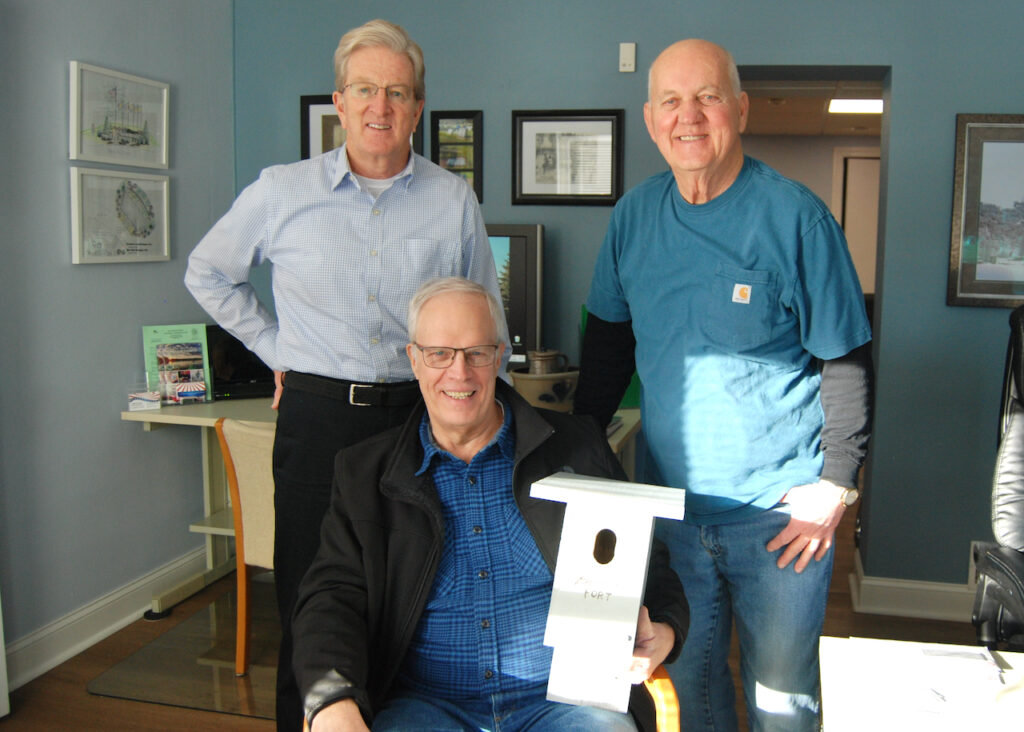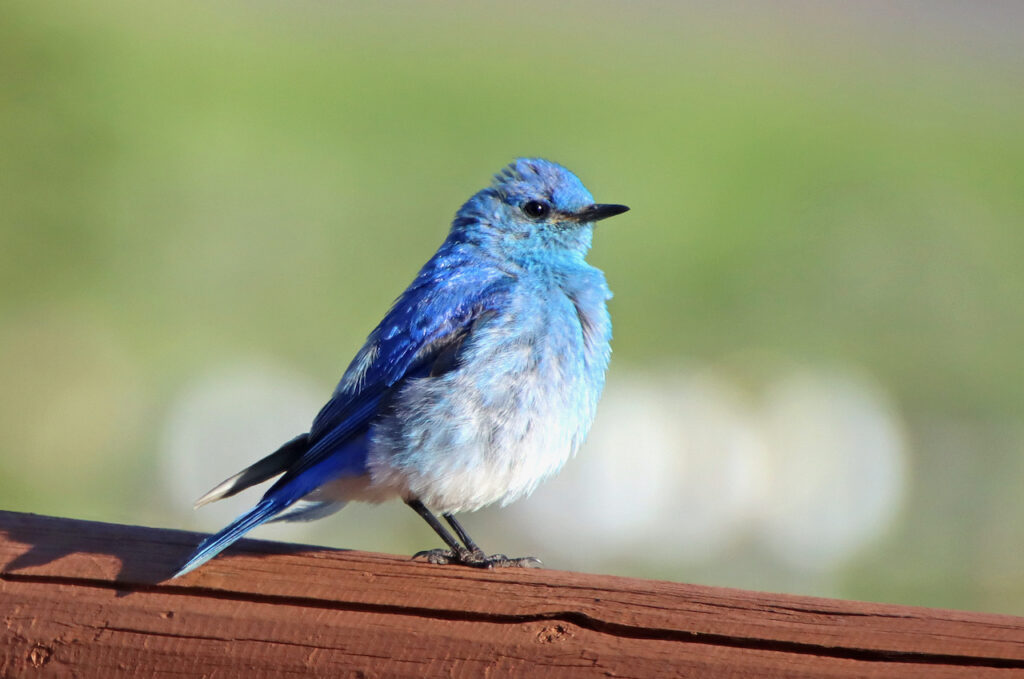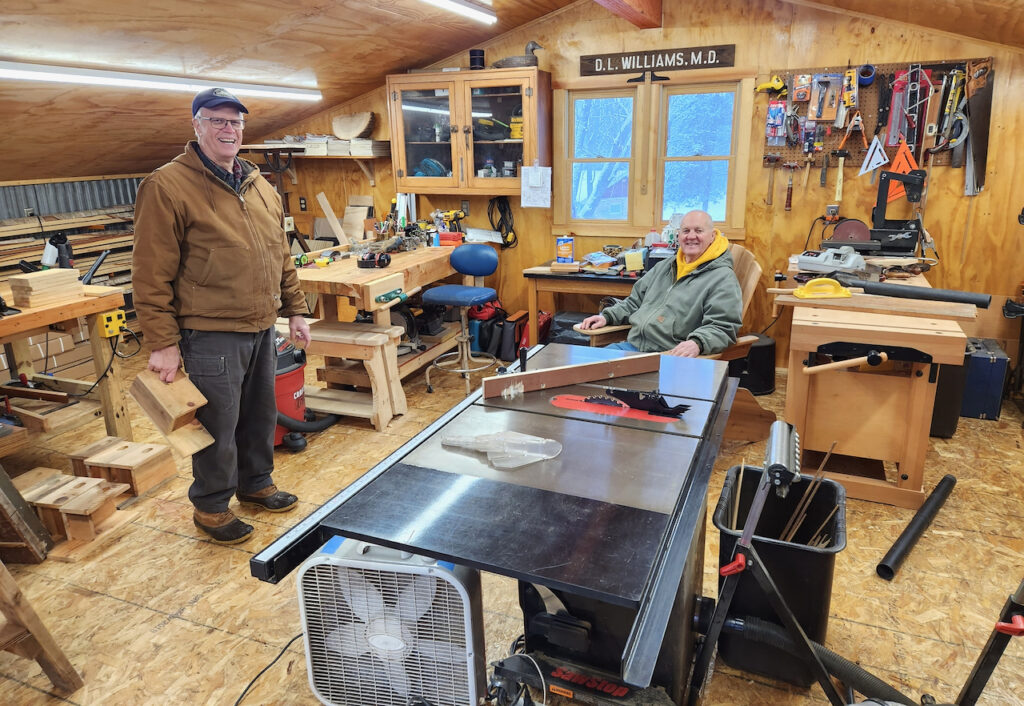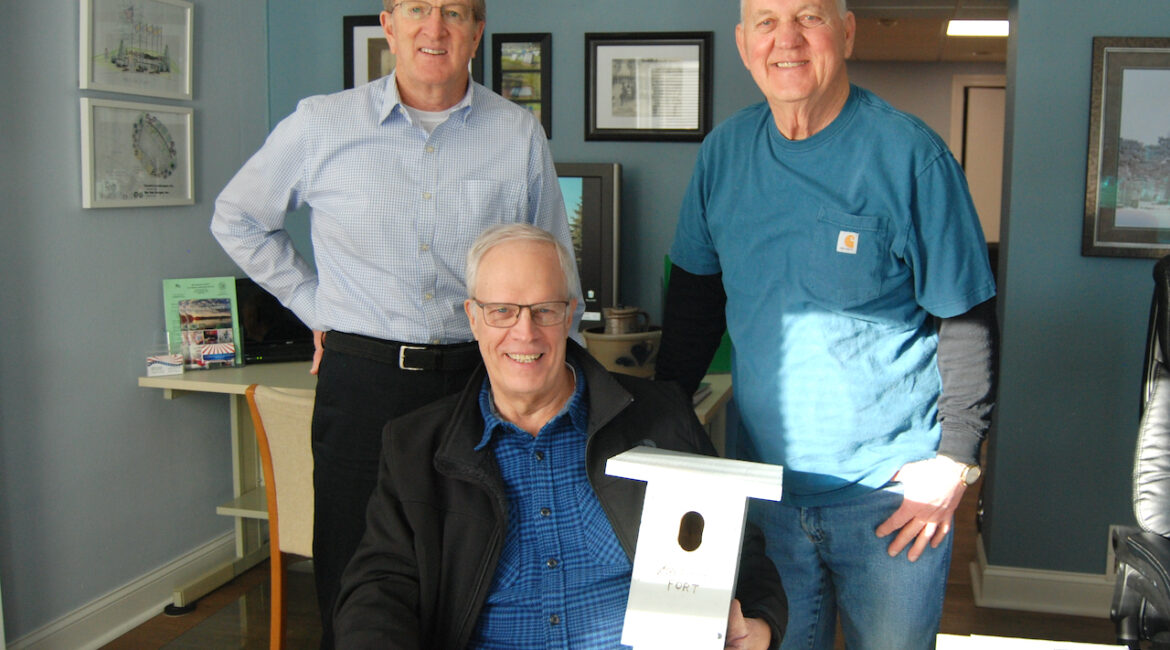Editor’s note: This story in among those featured in an ongoing series titled: “Evergreen stories,” which features the history associated with Fort Atkinson’s Evergreen Cemetery and the people who are interred within or — in this case — are working to make improvements to the property. President of the Evergreen Cemetery Association Brad Wilcox has described the cemetery as “an outdoor museum,” and serves as a source for finding and sharing the stories featured within this series.
By Kim McDarison
As noted within several traditional and published accounts, bluebirds, for many, have come to symbolize happiness, joy and hope.
That connection between people and bluebirds has long been embraced by Fort Atkinson resident Dr. Donald Williams as he works to help bluebirds, and other bird species, find hospitable conditions and flourish.
More recently, following his retirement in 2021 after a 40-year association with Fort HealthCare, he has increased his efforts by making presentations to the public hosted by area organizations about birds and other environmental issues, and building and giving away birdhouses.
Within his presentations, among his focuses are bluebirds, he said, because people find them interesting, calling them, among songbirds, “the crown jewel.”
Williams met on Monday with Evergreen Cemetery Association President Brad Wilcox and cemetery grounds supervisor Raughn Ferrell to deliver the first of some 10 bluebird houses that will be erected this spring on the cemetery grounds.
For Ferrell, the addition of the birdhouses brings an opportunity to invite more wildlife into the 25-acre cemetery.
He said the grounds are already visited by deer and wild turkeys, and recounted a recent visit made by a coyote.
While Wilcox, who enjoys photography as a hobby, also embraces visits from wildlife, he said he sees the addition of bluebird houses in the cemetery as enhancing feelings of relaxation and tranquility for those who enjoy visiting loved ones and walking within the cemetery for exercise.
Williams said that, for him, placing the houses in the cemetery offers another opportunity to expand his ever-growing communities of birdhouses, many of which, over the last 20 years, have been placed on various properties near and between Fort Atkinson and Jefferson.
The doctor said his fascination with attracting and sustaining birds by building and erecting houses began with his purchase of a cabin on an acre of wooded property along the Rock River.
A place on the river
Williams said he arrived in Fort Atkinson in 1980, along with his wife, Barbara, and three of the couple’s four children, then ranging in age from 1 month to 4 years old, and began working as an internist and pediatrician at the Fort Memorial Hospital. A year later, a fourth child was born, completing the young family.
At the time of his arrival, Williams said, he was in his late 20s, and much of his time was filled with responding to the needs of his patients. He recalled a time when he served as the only emergency doctor on call, responding to every emergency patient brought by ambulance to the regional hospital.
At the time, he was the community’s only pediatrician. He, in partnership with internist Dr. Alan Detwiler, operated a private practice from a building on McMillen Street, he said.
Back then, he typically worked for 10 hours each day, he noted, adding that about 20 years ago, he purchased a cabin on land about two miles north of Jefferson where he and his family could relax and commune with nature.
He enjoyed watching wildlife as it found its way onto the land around his cabin, and to help foster the success of the feathered creatures that arrived, he began building birdhouses, he said.
Williams said that for those working in the field of medicine, they can not always see the direct results of their work.
“You do what you can to stack the deck in favor of people being healthier, but you don’t always see how that’s working,” he said, adding that he found time spent at his cabin and “getting outside,” along with spending time with his family served as his best therapy.
“When you make birdhouses, it’s something concrete, and it’s fun. You see birds in it and go, ‘yes!'” Williams said.
Eager to support a bird population, Williams said he began constructing houses for such species as tree swallows, chickadees, wrens, bluebirds and wood ducks.
Today, he has about 10 birdhouses on his property.
With the exception of wood ducks, which need a different sort of house, he said, the difference between birdhouses built for various species is largely the circumference of an entryway.
As a subscriber to various magazines about birds, he has learned about them, and how to enhance their habitats and make them more comfortable.
“Birds like houses. It’s better than having to find a cavity,” he said, adding that many of the birds he supports are cavity nesters.
Branching out
Williams said he joined the National Audubon Society some 30 years ago, but one is not likely to find him squinting through binoculars along a hiking trail.
Instead, he said, people are more likely to spot him checking up on and cleaning out birdhouses he’s erected on properties near and around Fort Atkinson.
He has erected birdhouses in spaces along area roadsides and along the Glacial River Bike Trail near what is today Heritage Country Meats between Fort Atkinson and Jefferson, he said.
When he expanded his house-building hobby into making dwellings for wood ducks, he placed eight houses near the Rock River, branching out past his own land and erecting them on properties owned by his neighbors.
“People seemed to like them,” he said, noting that neighbors said “sure” when he asked for permission to place one on their property, or they’d give him the nod after they noticed he’d taken the initiative and placed one as a gift.
Williams said he makes weekly visits throughout the summer to houses he’s erected around the community. In September, he visits each birdhouse, making basic maintenance checks and cleaning out remnants from nests no longer in use.
Sometimes he finds ants have moved in, and one time, as he was removing nest debris, a mouse jumped out, he said.
Wood duck houses require less maintenance, he noted. He makes annual checks on houses he’s placed, making any necessary repairs.
Williams enjoys making birdhouses and giving them away, he said.
He’s made houses for wood ducks, songbirds and kestrels, giving them to anybody who expresses an interest in supporting birds and encouraging conservation.
Public appearances
Most recently, he has been making bluebird houses and giving them away to friends, neighbors, and the various people who come to talks and presentations, some of which have recently been organized by a community-oriented nonprofit group called Heart of the City.
After his retirement, Williams said, he became involved with the group to help support its desire to inform the public about such programs and concepts as Bird City Wisconsin — begun in 2010, and organized locally through the Friends of Rose Lake — “No Mow May,” a program supported by Heart of the City in Fort Atkinson to encourage habitat development for pollinators, and efforts to reintroduce native plants into area gardens, and, “yes,” he said, during those presentations bluebirds often come up.
Last year, he found himself providing birdhouses to give away to participants during several events, including at least three organized through the Heart of the City to register Fort Atkinson residents as participants in the second annual No Mow May event.
Bluebirds, like other species of creatures, can use some helpful intervention, he said, noting that in the United States, “the number of bluebirds has decreased greatly.” The plight of bluebirds is well-documented, he said.
Earlier this month, he was a speaker at the Jefferson County Master Gardeners Volunteer Association’s monthly meeting, where he spoke about bluebirds, and gave houses and templates to make houses, away.
“It’s always fun to give things away,” Williams said.
Bluebirds in Evergreen
Back at the cemetery, on Monday, Williams, Wilcox and Ferrell talked about plans to have between at least eight and perhaps as many as 10 bluebird houses erected at Evergreen. Williams gave instructions about installing the houses atop metal poles, a material preferable to wood to prevent egg-eating neighbors like raccoons from climbing into bluebird homes.
Wilcox said plans call for the houses to be placed throughout the cemetery, with several of them potentially serving as both homes for birds and section signs, noting that several section signs were coming to the end of their useful life, and the birdhouses, with the addition of some painted markings to identify the sections, might serve as their replacements.
“Cemeteries and golf courses are great places for bluebirds because they like places with short grass,” Williams said.
Wilcox said he anticipates receiving more birdhouses from Williams in February, which, he said, would “make a nice start” as the cemetery looks to bring more birds onto the property.
Ferrell will take on the role of caring for the houses.
Both Wilcox and Ferrell said they believed the bluebird houses would be placed around the cemetery sometime next month.
“The goal is to have them up and ready before March 1. That’s about the time the bluebirds will be returning to the area and looking for a home,” Williams said.

Evergreen Cemetery Association President Brad Wilcox, from left, Fort Atkinson resident and bird enthusiast Dr. Donald Williams, and cemetery grounds supervisor Raughn Ferrell gather in the Evergreen Cemetery office to make plans to install some 10 bluebird houses in the cemetery. Williams is pictured holding a bluebird house that will be installed in the cemetery this spring. Williams has, over the last several years, been building and installing birdhouses on area properties. Since his retirement from Fort HealthCare in 2021, he has been speaking publicly about birds and conservation, and giving birdhouses he has built away as gifts to members of the public. Kim McDarison photo.

A bluebird perches on a fence. The photo, taken by Evergreen Cemetery Association President Brad Wilcox, offers an understanding of why bird enthusiast Donald Williams described the songbird as “the crown jewel.”

Donald Williams, at left, receives a visit from Evergreen Cemetery’s grounds supervisor Raughn Ferrell in his Fort Atkinson workshop. Williams is making several bluebird houses to be placed in Evergreen Cemetery this spring. Contributed/Brad Wilcox.
This post has already been read 1797 times!
